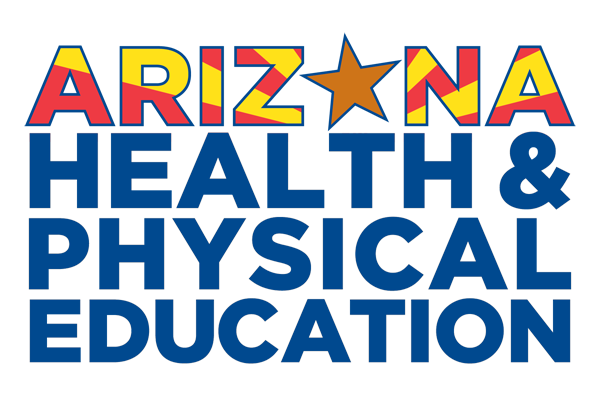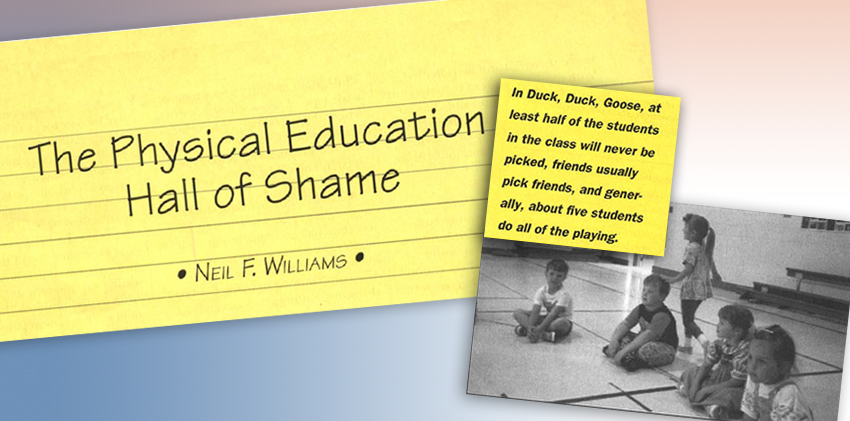The first paragraph of Jacob Bogage’s June 7 article in The Washington Post, “Dodgeball is a tool of ‘oppression’ used to ‘dehumanize’ others, researchers argue,” states that dodgeball is one of “gym classes most common games.”
We at SHAPE America – Society of Health and Physical Educators, found this disheartening and scary, but not surprising.
SHAPE America has been making the argument to exclude dodgeball from physical education programs for decades. In 1992, the game was inducted into “The Physical Education Hall of Shame” in our Journal of Physical Education, Recreation & Dance.
But though there is sound research and a well-reasoned argument for why it is no longer appropriate to include dodgeball in K-12 physical education programs, we know it is still played in many schools across the country.
Outdated Perceptions of Physical Education
So why are we still having this debate? Where is the missing piece to moving past this shameful practice and eliminating it from our programs? Should we blame Hollywood and American pop culture for the perpetuated images of “gym” teachers like Sue Sylvester in “Glee” or Mr. Carr in “Mean Girls” — blowing a loud whistle, wearing an ill-fitted warm-up suit, rolling out the ball and sitting back with a cup of coffee, as if to suggest that’s all that is required?
We don’t think it’s that simple. Even when most of us think about an “ideal” image of a physical education class, we’re probably visualizing elements related to the physical activity or physical skills part of the program.
We picture a PE teacher participating with students in jumping jacks, push-ups, stretches and maybe a lap or two around the field. We imagine lessons where kids learn skills in shooting a basketball or kicking a soccer ball. We might even picture kids learning to ride a bike or handle a lacrosse stick.
But our overall point is this: We visualize the “ideal” physical education class and we think almost exclusively about the physical skills and activity aspects of the program.
Today’s physical education programs are so much more than that.

PE Now
Visit a quality elementary school program and you will see students exploring ways of moving that make them feel good about themselves and excited to participate in physical exercise and activity, while also learning social and emotional skills that are intentionally embedded in every lesson.
In middle school and high school PE programs, you’ll see students engaged in fitness classes, team sport classes, and individual wellness activities like yoga and meditation, while also learning skills to help manage stress, anxiety and depression.
In other words, today’s physical education programs are about the whole child.
National PE Standards
One of the most important ways in which SHAPE America helps ensure our nation’s PE teachers are addressing the needs of the whole child is by developing and publishing the National Standards for K-12 Physical Education, which are used by states and local school districts across the country.

SHAPE America’s National Standards 1, 2 and 3 are easily the most identifiable for many PE teachers and the easiest to both implement and assess. They address the importance of helping students develop a variety of strong motor skills and movement patterns, apply knowledge of concepts, principles, strategies and tactics related to movement and performance, and demonstrate the knowledge and skills to achieve and maintain a health-enhancing level of physical activity and fitness.
In essence, Standards 1, 2 and 3 are what most people think of when they think of a “good PE program.”
National Standards 4 and 5 get to the heart of what we’re talking about today — and are, we strongly believe, grossly neglected and disrespected in too many school programs today.
Standard 4 states “The … individual exhibits responsible personal and social behavior that respects self and others,” while Standard 5 states “The…individual recognizes the value of physical activity for health, enjoyment, challenge, self-expression and/or social interaction.”
These standards speak to the very heart of what social and emotional learning is all about — the responsible personal and social behavior that is rooted in respect, and the value of physical activity for expression, enjoyment and social interaction.
Why Social and Emotional Learning Matters
National Standards 4 and 5 — and social and emotional learning (SEL) — are critically important in a time when we know stress, anxiety and depression are significantly on the rise, especially among Americans age 12 and older, with the most rapid increases seen in young people according to researchers at Columbia University’s Mailman School of Public Health and the CUNY Graduate School of Public Health and Health Policy.
Yes, developing physical skills and being active are important, but today’s physical education must also equally incorporate and emphasize Standards 4 and 5.
To quote another SHAPE America resource: “SEL is no longer just a classroom lesson, but a system-wide framework involving a coordinated approach in classrooms, schools, communities, and family units. Research shows that SEL efforts result in positive behavioral and academic outcomes including positive social behavior, less emotional distress and improved academic performance. Health and physical educators are on the front lines of the SEL movement — and can maximize their role by creating an optimal classroom environment and teaching students the social and emotional skills and behaviors that will help them succeed in all areas of their lives.”

So yes. We need to ditch dodgeball. It is unhealthy, inappropriate and, as The Washington Postarticle noted, a “dehumanizing tool of oppression.” But we also need to get to the real crux of why we’re still having this debate to begin with.
Our teachers, our parents and our overall educational system do not understand or value the importance of SEL in physical education programs and specifically, National Standards 4 and 5. We’re getting there — we have seen it firsthand in several amazing schools across the country. But if we truly care about the well-being of our students, we need to get there faster.
Additional Resources:
- SHAPE America Position Statement: Dodgeball Is Not an Appropriate Physical Education Activity
- SHAPE America’s National Standards for K-12 Physical Education
- Social and Emotional Learning: What Health and Physical Educators Should Know



